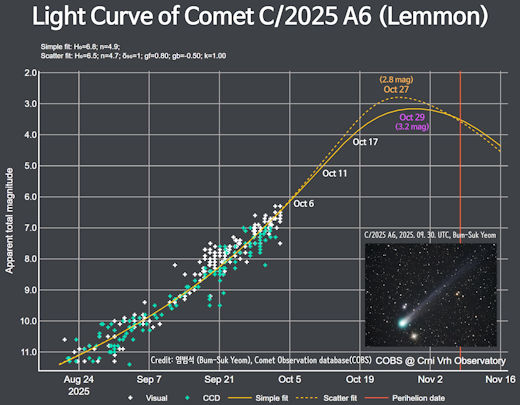A RARE GOLDEN COMET: Most comets are green, and sometimes blue. In June Lake, California, amateur astronomer Dan Bartlett is tracking a rare golden comet. Introducing, Comet ATLAS (C/2025 K1):
"This comet was not supposed to survive its Oct 8th perihelion (0.33 AU)," says Bartlett. "But it did survive, and now it is displaying a red/brown/golden color rarely seen in comets."
What's going on? The chemistry of this Oort Cloud comet is strange. It lacks the carbon compounds normally found in comets, according to spectroscopy by David Schleicher of the Lowell Observatory. "All of the carbon-bearing species, including CN, are unusually low," he wrote in Astronomer's Telegram #17362.
In sunlight, cometary gases turn green because of diatomic carbon (C2), and blue because of ionized carbon monoxide (CO+). Subtracting these colors apparently leaves gold. We don't know exactly why--or if it may have something to do with its recent close encounter with the sun.
"The comet is fairly impressive at 9th magnitude," says Bartlett. That makes it a relatively easy target for backyard telescopes. Point your optics to the boundary between Virgo and Leo in the eastern sky shortly before sunrise. Sky maps: Nov. 2, 3, 4, 5, 6, 7.
more images: from Chris Schur of Payson, Arizona; from Richard Sears of Ballico, California











